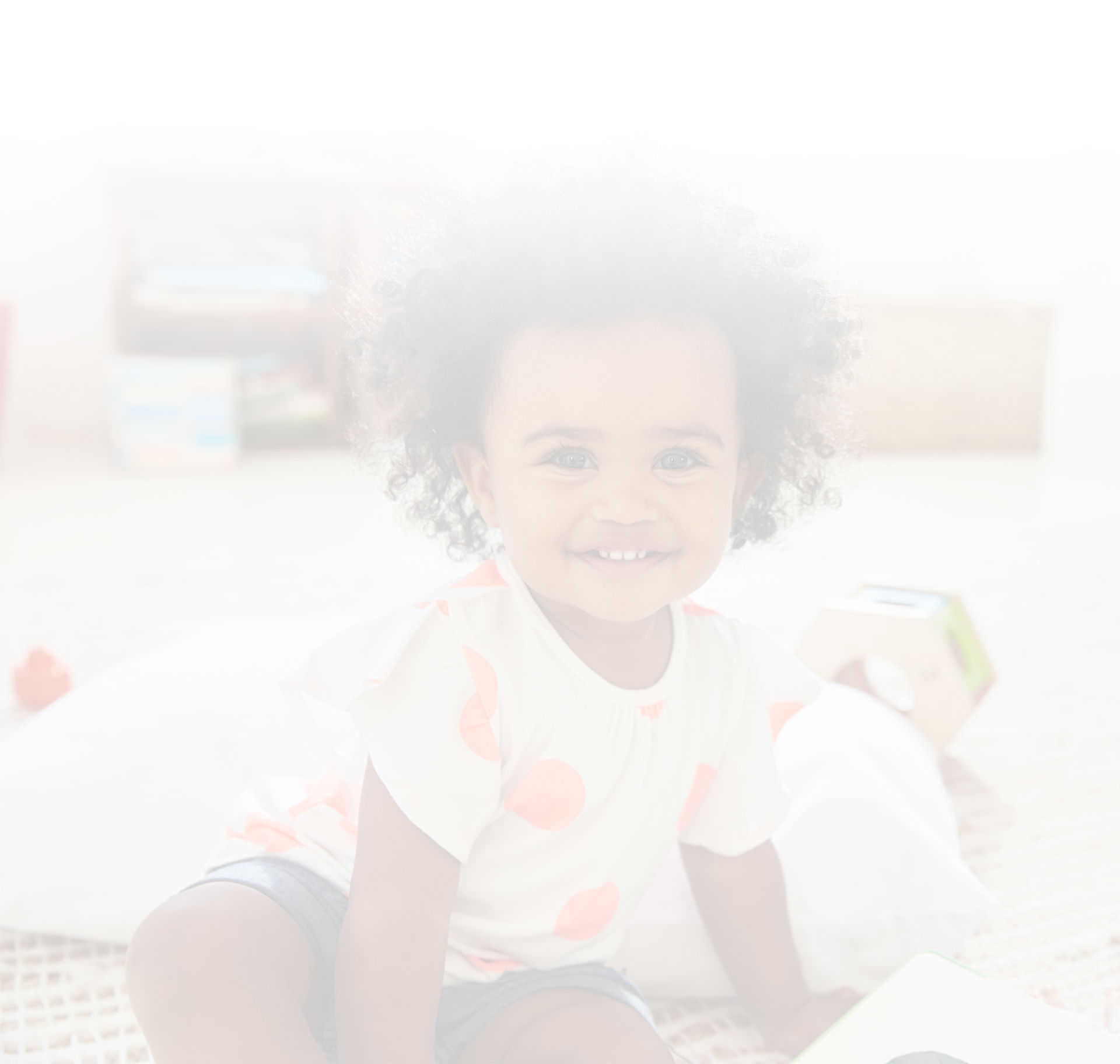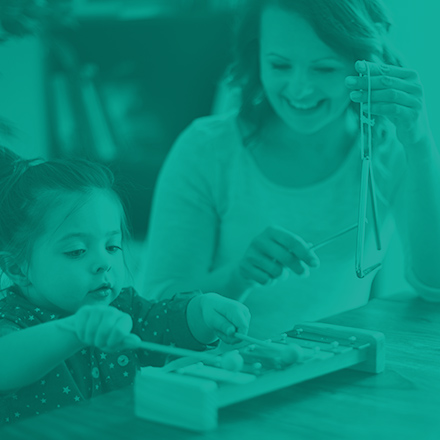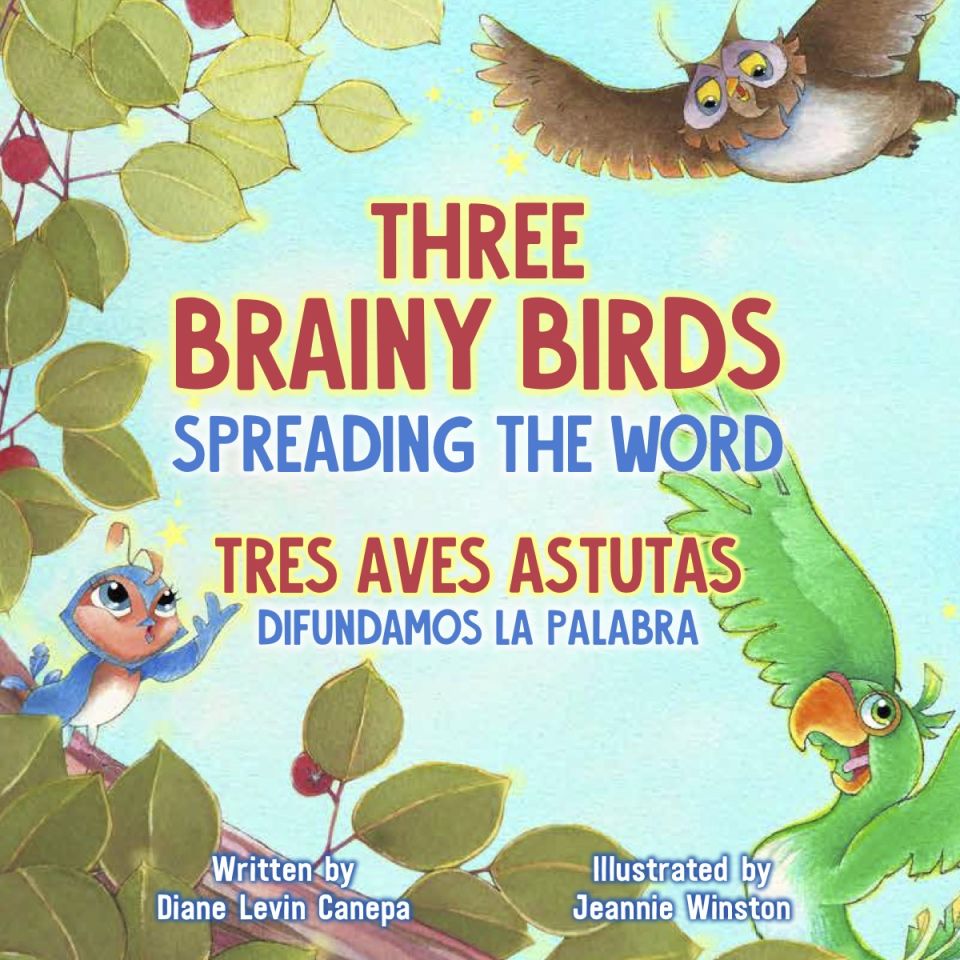Talk Read Sing
From the day we are born, we begin learning. As your children’s brain develops, the simple acts of talking, reading and singing with them will give them the tools they need to thrive.
First 5 California’s Talk, Read, Sing campaign emphasizes the importance of communicating with your child by talking, reading and singing to them every single day to encourage language and brain development. The goal is for children to hear 30,000 words every day starting at birth, which includes regular conversations, reading books to them and playing songs for them.

talk, read, sing to your child everyday
Even before they can talk, their brains are absorbing and creating connections to words. Have conversations by narrating the actions you take throughout the day and use a variety of facial expressions. Also, respond verbally to gestures or noises such as cooing, pointing or clapping.
Talk

Read

Children can be read to no matter how young they are, whether it be through reading books to them or simply reading words you see out in the real world.
Introducing rhythm, melodies and singing from birth helps set the foundation that your little one needs for language development and other forms of learning. Use known nursery rhymes or make up songs with silly meanings to help build up memory and stimulate motor skills. Warning – singing may turn into dance parties!
Sing

Download Three Brainy Birds Spreading the Word
Not sure where to get started? Here is a free copy of “Three Brainy Birds Spreading the Word.” Download it today!
Also, check out our At Home Activities page for ideas for every age.
Take The Pledge
I pledge to talk, read or sing to my child every day!
"*" indicates required fields
Developmental Milestones
Review our Development Milestones to determine if your child is meeting the appropriate milestones. If you have concerns, give us a call at 1-888-5 FIRST 5 to get connected to our services.
Additional Resources
Create Homemade Instruments
Singing is a wonderful form of self expression and a great way for little ones to learn and develop their language skills. Invite the whole family to make music together—create instruments of your very own using household items.
Sing a Song
Singing is a great way to reach the recommended 30,000 words spoken every day to your young child! Put on a fun tune or sing on your own and encourage your little one to join you!
New Children’s Museum Toddler Time
The Museum hosts facilitated toddler programming every Friday morning beginning at 10am. The virtual Toddler Time at Home takes place on the first and third Fridays of each month, and the in-person Toddler Time at the Museum takes place on the second and fourth Fridays of each month with two sessions at 10am and 11am. The toddler program values the whole child and supports healthy bodies and minds, with music, movement and social play for young children. It’s also free with admission.
DIY Musical Instruments
You can make these musical instruments with your little one using materials at home
PBS Ready To Learn
Through the Ready To Learn Initiative, funded by the U.S. Department of Education, CPB and PBS are partners in developing high-quality educational media and resources to advance critical early learning skills for children ages 2-8 to help them succeed in school, work, and life.
Listening Walk
Make a list of things you can hear on a walk and practice using the listening sense
Hand Clapping Games
Parents, remember hand clapping games such as patty cake, rockin’ robin and slide? Teach them to your little ones!
- Patty Cake
- Miss Mary Mack
- The Cup Game
- Sevens
- Rockin’ Robin
- Tic Tac Toe
- Concentration 64
- Slide
- Say, Say Oh Playmate
- Stella Ella Ola
Simon Says
The classic game we all loved as a child is still fun as ever! Check out this list of fun ideas to include in your game for even more silly fun.
Singing
Singing is a great way to reach the recommended 30,000 words spoken every day to your young child! Put on a fun tune or sing on your own and encourage your little one to join you!
Tips for Communicating with Your Baby
- As you listen and respond to your baby, try using lots of facial expressions. When your baby is engaged, he is more interested in communicating!
- An easy way to talk with your baby is to narrate your day using words to describe the things you see and do together – this helps your child connect objects with actions!
- Even if you may not be sure how much your child understands, talk, read, and sing together anyway! Your baby is absorbing all the words, stories and conversations you share together.
Tips for Communicating with Your Toddler
- Gestures like pointing are an important part of language development. Engage in back-and-forth conversations with your little one about the gestures he/she is making so that he/she can connect the gestures with language. For example, when your little one points to her cup, you can say, “It looks like you want your blue cup.” and wait for a response. Then say “What would you like to drink? How about some water?”
- To help connect names and objects with gestures, play games like “Simon Says”. You can say things like, “Simon says touch your little nose,”“Simon says touch the white front door,” or “Simon says give Mommy a big hug.”
- By the age of 2, most children will be able to say roughly 50 words but remember, every child develops at his or her own pace. When you respond to your little one, try to emphasize the correct pronunciation of words and phrases.
- Between the ages of 18-24 months, toddlers begin to use action words and will communicate through a combination of short phrases and gestures. Try to respond to your toddler in full sentences, while still also using gestures and facial expressions.
Get more tips at TalkingIsTeaching.org, PBS parents, KidsHealth.org, and HealthyChildren.org!
Talking Together at Home and On The Go
Ordinary moments spark rich conversations! To a young child, it’s the everyday moments that are the most interesting and fascinating. Here are some ways to add fun and colorful language to daily experiences.
Partner in Literacy
© 2013 Sesame Workshop. All rights reserved.
PARENT TIP SHEET
SESAMESTREET.ORG/LITERACY
| As you… | You might say or ask… |
|---|---|
| get dressed | “What body parts do you have a pair of?” |
| cook in the kitchen | “Let’s chop..mix..pour..spread..shake!” |
| use kitchen tools | “What is this tool used for, and how does it work?” |
| walk down a street | “What kinds of stores do you see? What kinds of vehicles do you see??” |
| observe an insect up close | “Look an ant! Where do you think it’s going?” |
| look up at the clouds | “What shapes or animals do you see in the clouds?” |
| walk through a park or field | “What’s alive? Not alive? How do you know?” |
| drop mail in the mailbox | “How do you think this letter will travel to grandma?” |
| see a firefighter or police officer | “A firefighter helps keep us safe when there’s a fire. What other people have important jobs?” |
| get ready for bed | “What did we do today? What was your favorite part of your day?” |
Reading Activities
Building Literacy Skills Every Day
You and your child do lots of things together every day. Sometimes routines like riding in the car, going to the doctor’s office and grocery shopping can seem unexciting. Here are some simple reading activities and games that can make these everyday chores more fun for both of you. At the same time, you will support your child’s language and literacy skills and build the foundation for reading and writing.
Reading Activities At Home
Children spend a lot of their time at home. You can support your child’s learning while you do daily chores. You can invite your child to help you, or you can provide an activity for your child to do close to you. That way, you can talk and listen to your child while you work.
Baby/Toddler
Pretty Picture. Make sure your baby has interesting things to look at while you are busy around the house. A colorful picture or a vase of flowers in front of her will get her attention. Her favorite thing to look at is you! As much as possible, place her where she can see you and hear you as you work. Talk to her about what you are doing using simple language like “Watching baby, watching baby, washing dishes, watching baby!”
Pots and Pans Music. While you work in the kitchen you can keep your baby close. Give her some light pots and pans of different sizes. Then give her a wooden spoon. She can make music while you use words like loud, soft, bang, and tap. Show her what the words mean by using your body and voice too. For example, when you say “That’s so loud!” cover your ears. When you say “That’s so soft!” speak in a whisper.
Recycle Problem-Solving. Toddlers love to create and solve problems using simple materials. Give your child some clean recycled items like cans of different sizes. Make sure there are no sharp edges. He will spend a long time fitting the cans inside of each other. As he works, introduce words like small, medium, large, inside, and fit.
Teaching a Love for Books
The most important language stimulation we can provide to our infants and toddlers is reading to them, says Pamela High, M.D., FAAP. “I think that the most important thing parents do by reading with their infants, toddlers, and preschoolers is to teach them to love books and stories so much that they will be very motivated to learn to read, even when it is a difficult task for them,” she says.
That motivation is strengthened even as the bond between a parent and child grows while they share reading time. “The other really important aspect of reading with young children is that this always occurs within the relationship,” says Dr. High, who is Chair of the American Academy of Pediatrics Committee on Early Childhood, Adoption, and Dependent Care. “This activity provides busy parents a reason to slow down and pay total attention to their child and the story. This often becomes a favorite time of the day for both parent and child. When parents read with their children as part of a regular bedtime routine it also promotes healthy sleep habits.”
Reading, rhyming, singing, and talking — beginning from birth — profoundly influence literacy and language development, the foundations for all other learning. The results last a lifetime.
Quick Tips for Reading Fun
Start talking, singing, and reading with your child from the beginning. Even though your child can’t read when he’s an infant, he’ll get the idea that books are fun and reading is a fun activity you share together.
- Repetition is good — it helps a child build important language skills.
- Reading doesn’t have to be a huge project. Just a 3-minute story every night before bed will help get your child interested in reading.
- Board books and soft books are good for infants to get used to holding a book in their hands — and enjoying the experience.
This article was featured in Healthy Children Magazine. To view the full issue, click here.
Last Updated 11/21/2015
Source Healthy Children Magazine, Back to School 2008
Remember, everyday moments are rich bonding and learning opportunities. Enjoy the magic of these moments with your child.
ZERO TO THREE is a national nonprofit organization of renowned pediatricians, educators, researchers, and other child development experts who specialize in the first years of life.
If you are like most parents today, your greatest challenge is probably caring for your baby while also taking care of yourself and your responsibilities. The competing demands on your time and energy make finding the time to connect with your baby no small challenge. But daily activities, such as feeding, bathing and grocery shopping, don’t need to take time away from bonding with and enjoying your baby. In fact, these everyday moments arerich opportunities to encourage your child’s development by building her:
self-confidence
curiosity
social skills
self-control
communication skills
Did you know? Simple actions like talking, reading, and singing with your children—right from the start—can build their brains and prepare them for success in school and beyond.
So whether it’s meal time, bath time, play time, or even laundry time, have fun turning these everyday moments into “talk time”! Here are some ideas on ways you can talk, read, and sing together during each cycle of laundry!
While Washing
Play I-Spy! Take turns finding clothes you need to put in the washer. “I-spy your little blue shirt that is soft.”
Read together. Words are all around the laundromat – even on clothing labels and machines! Have fun pointing them out together. You can say, “My shirt tag says ‘wash cold’ so I’m turning the washer knob to cold. What does your tag say and how will we wash your clothes?”
Take about the bubbles. You can say, “Let’s find bubbles in the washer! How are they moving? They’re moving around and around.”
While Drying
Talk about colors. Name the colors you see all around. You can ask,”What color are my socks?”What color are yours?” You can also use words like bright or dark to describe like colors.
Go on a shape hunt! Look for different shapes around the store. Ask, “What shape is the dryer?”
Count together. You can count washers, dryers, or older children can count the number of coins you need to put into the machine.
Sing a song! Sing your favorite song or make up a fun song about being at the laundromat together. Clap, tap, stomp, or dance along.!
While Folding
Play peek-a-boo! Cover your baby’s face and say, “Where’s (baby’s name)?” Then say, “There you are!”
How does it look and feel? Take turns using words to describe how each clothing looks and feels!
Find a pair! Talk about numbers and use math words like pair. You might say, “Let’s find a pair of socks. Pair means two things that match.”
Play a sorting game. You can say, “Can you make piles of different kinds of clothes like shorts, shirts, socks, and dresses? All the socks go here and all the shirts go here.”
For more ideas, visit TALKINGISTEACHING.ORG
Source: View Source
Learn more about your baby by watching for developmental milestones. Smiling, cooing, and babbling are just a few. Our baby will show you many more milestones in how he plays, learns, speaks, acts, and moves. Look for your child’s milestones regularly and share his progress with the doctor at every well-child visit.
Nursery Rhymes for Young Children
Rhymes for Building Oral Language Facility
These nursery rhyme song lyrics are available from a variety of albums:
A Crooked Man – John “Kinderman” Taylor
Ants Go Marching – Kiboomu Music
Baa, Baa Black Sheep – Kiboomu Music
Baa, Baa Black Sheep – Traditional Nursery Rhyme
The Cool Humpty Dumpty Song – The Rocking Rockets
The Farmers in the Dell – Lyrics Adapted by Songs For Teaching™
Fiddle-de-dee – Sheet Music and Piano Solo Instrumental
Fiddle-I-Fee – Sheet Music and Piano Solo Instrumental
Frog Went a Courtin’ – Sheet Music & Piano Solo Instrumental
Georgie Porgie – Sheet Music & Piano Solo Instrumental
Go In and Out the Window – Lyrics Adapted Songs For
